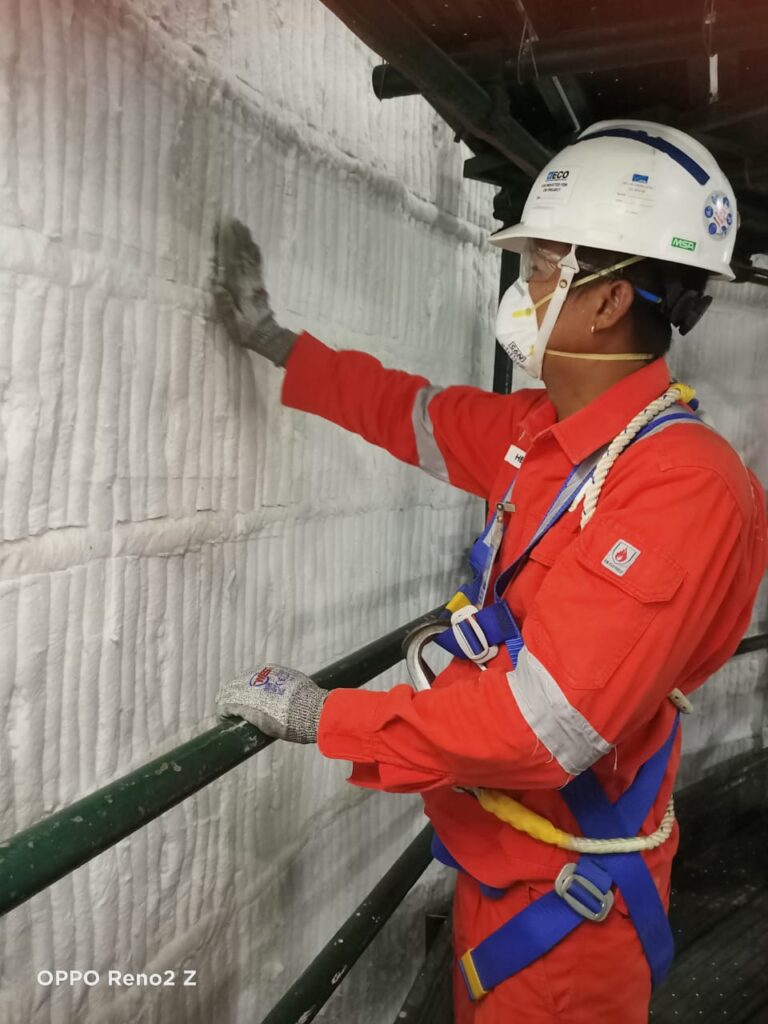Balanced Engineering & Construction

The Thermal Oxidizer is a crucial component of emission control systems in various industrial settings. It helps in the safe and efficient disposal of hazardous gases and pollutants. Due to its critical function and intricate design, the installation of refractory and ceramic fibre modules requires a contractor with proven experience in handling such specialized projects. BW Offshore EPC entrusted this task to BEC, a trusted leader in industrial construction and refractory solutions. BEC installed the refractory and ceramic fibre module on the thermal oxidizer located at Seatrium, Singapore.
The project encountered several challenges, including:
The thermal oxidizer presented a complex structure consisting of three distinct sections – Section 1, measuring 13.223 meters in height, featured insulation refractory on the inner face and dense refractory on the outer hot face. Sections 2 and 3, standing at 15.362 meters and 15.548 meters, respectively, were lined with ceramic fibre modules. When fully assembled, the thermal oxidizer reached an impressive height of 44.133 meters.
BEC began by installing refractory materials inside Section 1, meticulously ensuring proper coverage and adherence to specifications.
Next, BEC conducted refractory cure-out operations, a crucial step in the process, which included the installation of blanking plates equipped with insulation to withstand temperatures of up to 550°C.
In Sections 2 and 3, BEC expertly installed ceramic fibre insulation, meticulously wrapping the inner walls to provide optimal thermal insulation and protection. Additionally, BEC installed insulation at the field weld joint locations between the various sections of the thermal oxidizer, ensuring seamless integration and continuity of insulation throughout the structure.
Throughout the project, BEC conducted sample testing of the refractory materials, adhering to stringent quality standards and specifications.
BEC’s meticulous approach and expertise in refractory works ensured the successful completion of the installation within the designated timeframe. Commencing work on the project in December 2023, BEC remained dedicated to meeting deadlines and delivering results. By April 2024, all tasks were successfully completed, and the thermal oxidizer was ready for operation, meeting regulatory standards and operational requirements. As a result of BEC’s efforts, BW Offshore EPC received a fully functional and reliable thermal oxidizer, ensuring uninterrupted operations and compliance with safety and regulatory standards.
BW Offshore EPC FZCO
Singapore
April, 2024
+(65) 6778 6858
sales@be-con.com
BEC specialises in vertical structures within the energy infrastructure sector. Our expertise as an EPC contractor and unwavering commitment to delivering top-tier, innovative solutions sets us apart.
Copyright © 2024 Balanced Engineering & Construction Pte Ltd